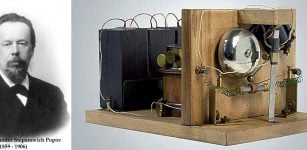On This Day In History: First Experimental Hydrogen-Filled Balloon Reaches A 900m Altitude – On August 27, 1783
MessageToEagle.com – On August 27, 1783, the first experimental hydrogen-filled balloon leaves Champs de Mars, Paris, unmanned, and reaches a 900m altitude. The balloon had a 13ft (4m) ) in diameter and was made of rubber-coated silk.
On the 26th the balloon was moved secretly by night to the Champ de Mars, a distance of 4 kilometers.
On the next day an immense concourse of people covered the Champ de Mars, and every spot from which a view could be obtained was crowded.
About five o’clock a cannon was discharged as the signal for the ascent, and the balloon when liberated rose to the height of about 3000 ft. with great rapidity.
A shower of rain which began to fall directly after it had left the earth in no way checked its progress; and the excitement was so great, that thousands of well-dressed spectators, many of them ladies, stood exposed, watching it intently the whole time it was in sight.
The balloon, after remaining in the air for about three-quarters of an hour, fell in a field near Gonesse, a commune in the northeastern suburbs of Paris, France, about 15 meters off, and terrified the farmers so, they attacked it with pick axes and spades, leaving only torn remains.
Hydrogen gas was at this time known by the name of inflammable air; and balloons inflated with gas have ever since been called by the people air-balloons, the kind invented by the Montgolfiers being designated fire-balloons.
One of the spectators present for the demonstration is the American ambassador Benjamin Franklin.
The gas had been manufactured, beginning on August 23, 1783, by pouring 225kg of sulphuric acid over half a ton of scrap iron. Able to lift about 9kg, it travels 24km in about forty-five minutes.
MessageToEagle.com











